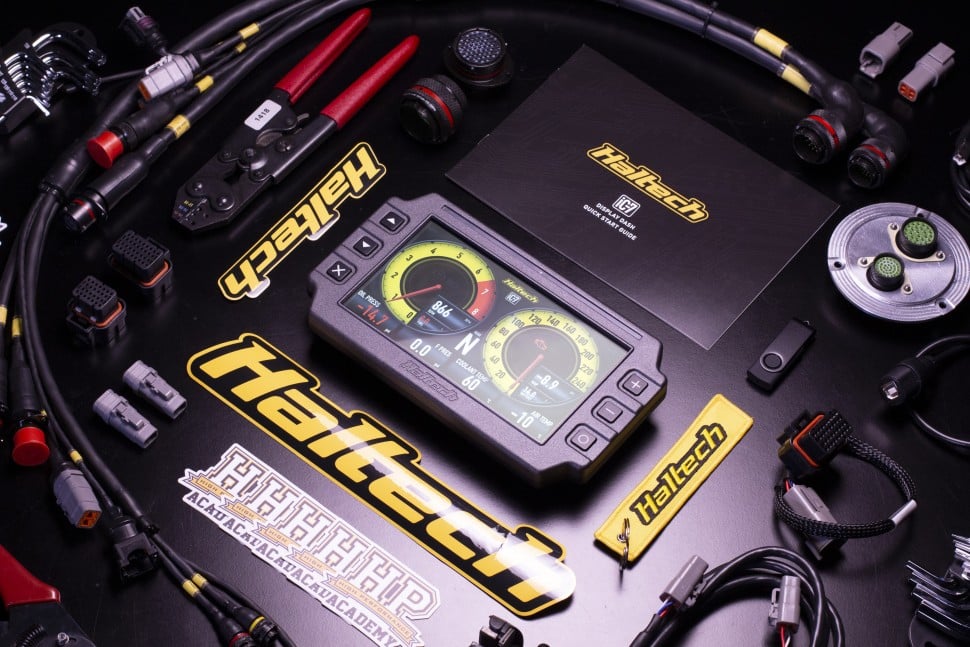| 00:00 |
The underbody of a car is an area ripe for gains, with both drag reduction and downforce improvements on the table.
|
| 00:07 |
One of the biggest mistakes I see from club level cars is to try and go too complicated with the floor geometry in an attempt to realize these gains they've heard about on the internet.
|
| 00:17 |
However, as with many of these aero devices, the trick here is to keep it simple unless we have access to higher level development tools or professional assistance.
|
| 00:28 |
The primary objective of the underbody is to keep the flow nice and smooth from the front to the rear of the car and allow any suction generated by the diffuser to propagate forwards across the floor, making downforce across the whole car's floor.
|
| 00:42 |
The smoothing of the underbody inevitably leads to less car drag than an exposed underbody as well.
|
| 00:48 |
In most cases, what we're targeting with the underbody between the axles is a flat floor with a good planform shape and a few cutouts as necessary for cooling.
|
| 00:58 |
Too often club racers try to put in fancy full length tunnels in their floor based on things they've seen and heard on the internet, and more often than not this will actually produce less downforce than a fully flat floor with a decent diffuser.
|
| 01:11 |
When it comes to floor shape, we want to start by drawing a box that covers as much of the floor as our rules allow and then we can start to make cutouts to shape it.
|
| 01:20 |
At the front, we need to have the floor width made up to the width of the centre section of the splitter.
|
| 01:26 |
We then want a small angle out, around 30 degrees.
|
| 01:29 |
This can help create some vortices that will increase suction on the forward portion of the underfloor.
|
| 01:35 |
Once this is behind the tyre, we'll need to step out more rapidly.
|
| 01:39 |
Many cars tend to run the area straight behind the tyre directly sideways, however I prefer to keep a diagonal in this area and cut out more behind the tyre.
|
| 01:48 |
Why? Because the dirty air from the tyre will often latch onto the floor in this region and cutting away the floor there can give breathing space to help get that air further out.
|
| 01:58 |
This will usually pair well with any venting we're doing of the lower front guard.
|
| 02:03 |
Once we've moved out to the full width of the floor, we can then go rearwards and tilt the front of the rear tyre, at which point we need to come and bring the floor in to a location where it will mate to the diffuser.
|
| 02:13 |
The front of the floor should have clean and smooth transitions to the back of the splitter, and the rear of the floor should have good transitions to the diffuser.
|
| 02:21 |
None of these are hard rules, but it is a decent starting point for the floor.
|
| 02:27 |
Within this basic shape of the floor, we may need to provide additional considerations for cooling.
|
| 02:32 |
In a front engine car, the exhaust will typically run through the centre of the transmission tunnel.
|
| 02:37 |
This means that large amounts of heat can be generated in this region, and it's made much worse when we close up this area with a flat floor.
|
| 02:44 |
We'll discuss the consequences of, and solutions for, this later in the course.
|
| 02:49 |
The simplest way to solve cooling issues here is to open up a large section in the flat floor where the exhaust is.
|
| 02:55 |
However, this comes with a notable performance loss as we'll no longer have clean flow in the centre section of the diffuser.
|
| 03:02 |
In general, the underfloor should be sealed as well as possible to the main chassis and body to stop any air leakage paths out the side from the engine bay or transmission tunnel air.
|
| 03:11 |
We want to keep the high energy floor air below the floor and the low energy cooling air above the floor if possible.
|
| 03:19 |
Let's summarise what we've learned about the underfloor aerodynamics in this module.
|
| 03:23 |
The underbody of the car offers significant opportunities for drag reduction and downforce improvement, but simplicity is key unless professional tools or assistance are available.
|
| 03:33 |
A flat floor with a good planform shape and minimal cutouts for cooling is generally more effective at the club level than complex, full length tunnels with incorrect design.
|
| 03:44 |
The goal is to maintain clean airflow from the front to the rear, allowing the diffuser to generate downforce across the entire floor.
|
| 03:51 |
Proper transitions between the splitter, the floor and the diffuser, along with effective cooling strategies are essential for optimal performance.
|





